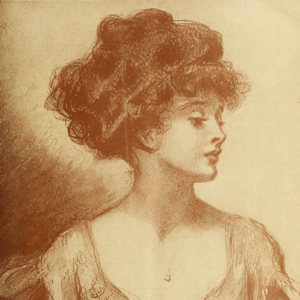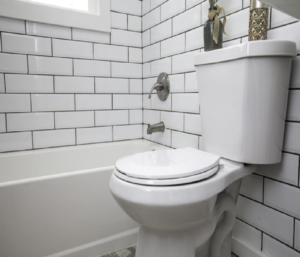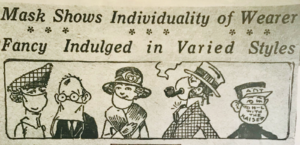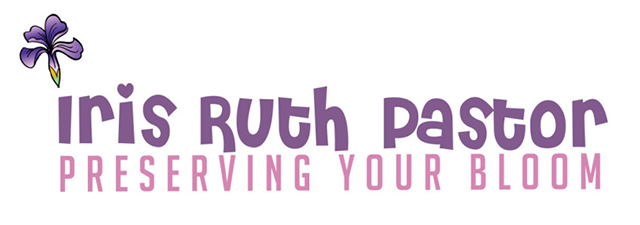Last week, based on a friend’s suggestion, I asked readers to come up with two words each to describe the years 2020 and 2021.
Thank you to all who contributed their opinions. Here is a sampling of responses:
2020
Difficult, trying
Bad, persistent
Totally depressing
Physiopsychosocialspiritual challenge
Naïve population
Long, confining
Covid, pandemic
Disaster, heart-wrenching
Woefully unprepared
Challenging, dark
2021
Still early
Nonsense, annoying
Dumb corona
Cautiously optimistic
Semi-normalcy
Happily vaccinated
Hopeful, sanity
Hopeful, progressive
History bears out the intuitive feeling of optimism and hopefulness that follows a pandemic.
In 1918 and 1919, a global flu pandemic killed 675,000 Americans and in 1920 and 1921, a depression shattered the economy. What happened after? There ensued a long period of unprecedented growth, progress and prosperity, ushering in one of the most innovative periods known today as the Roaring Twenties. Historians feel the huge growth in the U.S. economy was not an anomaly. It was a return to normalcy.
The Roaring Twenties deserves its name—the U.S. economy grew by 42 percent from 1921 to 1929. But economic historians argue that the factors that made the decade so profitable were less of an anomaly than a reprieve from hardship and poverty. People simply exhaled. People gloried in the belief that anything was possible.
Life would simply never be the same. The changes after the 1918 pandemic were ubiquitous and lasting.
Fashion was impacted by the commercial rise of female fashion designers and couturiers. Think Gabrielle “Coco” Chanel, Jeanne Lanvin, Gucci, Elsa Schiaparelli and the house of Fendi.
Flapper fashion was all about getting loose and one observer noted it “applied to looser morals too.” Women’s fashion in the 1920’s centered around dresses with a drop waist, a belt or sash in the area of the hip, and a skirt above the ankle but never – heaven forbid – above the knee. Females of all ages abandoned the corset. Dresses became more revealing, with shorter sleeves and lowered bust lines.

Source: Women’s 1920s Hairstyles: An Overview
“Live for now” was the mindset. And this freedom was also reflected in hairstyles for women. Rebellion reigned against past trends focusing on long hair meticulously and complexly pinned-up. Think the Gibson Girl look.

Short cropped hair became the rage.

Men’s hair also enjoyed a shift to simplicity – becoming less “poofy” and more slicked back to achieve a flatter type of look.

Who doesn’t know who this is?????
In the 1920s, jewelry followed suit: a turn away from fussy Art Nouveau styles and a turn toward simplicity and art deco styles. Out was the mindset to “wear your wealth.” Out was the exclusive use of expensive precious stones. In was the introduction of costume jewelry – utilizing cheaper semiprecious stones and fake plastics. Long pearl necklaces abounded and the introduction of cultured “fake” pearls made this iconic piece of jewelry within reach of many women of lesser means and status.
Bright colors were in vogue. Bangles of Bakelite were embraced by the masses.

And it wasn’t just fashion that broke with tradition and where innovation flourished. The period from 1921 – 1929 ushered in the automobile, the radio, moving pictures, the refrigerator, the electric washing machine, and the jukebox. Historians say that after the pandemic people simply wanted to have fun and spend money. And they did.
Home décor also was impacted in the aftermath of the pandemic.
Brass beds rose in favor, replacing wooden bed frames, headboards and footboards. Why? Because wooden surfaces were difficult to wash down, but brass and iron beds could be cleaned easily with bleach and water.
Clawfoot tubs on legs, though picturesque, were difficult to effectively wash and clean due to multiple surfaces. Built-in tubs had edges sealed against the tiled wall on three sides. – alleviating many crevices and joints that collected dust and grime. Bright white Subway tiles were used to surround the tubs as they also were simpler to clean and maintain.

According to Dr. Jessica Spector, a Yale University professor of alcohol history, cocktails, and ethics, these new inventions brought people together like no other: “You’ve got people listening to the same music and watching the same pictures; all of a sudden people can share a culture.”
As my grandson, Benjy, reminded me: the National Football League (NFL) also began taking serious shape during this time. And football would, in the coming decades, dominate professional sports and be the impetus for great community connections among people in the U.S.
As far as health care systems, around this time, the United States began adopting employer-based insurance plans which expanded access to healthcare to the general public.
Like Covid, during the pandemic, trains were seen as an expedient vessel for transmitting disease so the general public was wary of riding on them. Editorials advised against overcrowding and cautioned citizens to avoid passenger trains as much as possible. With the waning of the Spanish Flu, large numbers of passengers once again felt safe to travel and returned to the trains as a reliable mode of transportation.
Like Covid, during the 1918-19 pandemic, mask wearing became an effective tool for fighting the virus’s spread. And masks became a sign of creativity and individual taste.

Clipping from a “The Seattle Clarion Ledger” 1918 article that opens with “Styles of wearing influenza masks today are many and weird.” (Courtesy Kimberly Alexander).
A cautionary note: there was a short post-Spanish Flu depression in 1920 and 1921, but prosperity and optimism and good times quickly returned. Normal economic growth and the normal economic business cycle roared back – lasting until the 1929 stock market crash – known as The Great Depression – silenced the roar. Will history repeat itself? Who knows. Until then….
My two words to sum up 2021:
Re-inventing, Re-birth
Keep Preserving Your Bloom,
Iris Ruth Pastor
